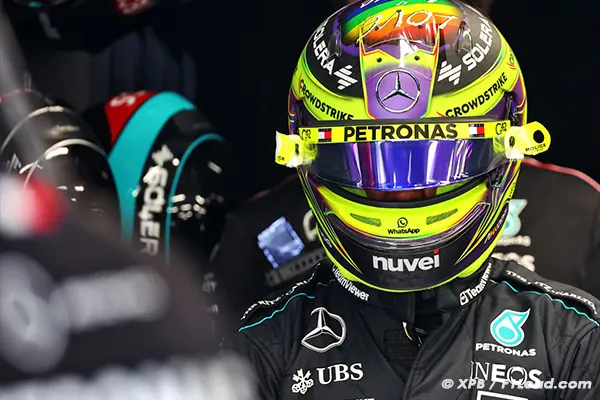Shovlin reveals Hamilton faces challenges with F1’s ground effect, impacting his qualifying performance.
Even though Lewis Hamilton clinched the latest Grand Prix in the UK, it is George Russell who has dominated him this year in qualifiers, and quite markedly so, at 10 to 2.
How can such a performance gap be explained – even though, of course, it’s often a matter of hundredths rather than tenths?
“George has always set a very high bar in qualifiers,” attempts to justify Andrew Shovlin, Chief Race Engineer at Mercedes F1.
“From the moment he entered F1, he was impressive. Even with Williams, he managed quite remarkable qualifying sessions. We know, therefore, that he is very fast.”
That’s the view regarding George Russell. But what about Lewis Hamilton? How can his slight drop in guard during qualifiers be explained?
Shovlin suggests a reason: the 2022 aerodynamic regulations, with ground effect, seem less suited to the Brit.
“Lewis has not hidden that Saturdays have been his difficult days. He has struggled to accept that this generation of cars does not suit his style. He has worked on his driving style.”
“But we have worked tremendously hard to make the car: a) faster – it has never been fast enough – but also b) with a driving balance that allows the drivers to attack the lap on Saturday. So, we have made progress.”
“Recently, George has beaten Lewis by quite fine margins in qualifiers. It’s thus good for the team that Lewis is back and he will continue to work. But yes, we will keep working on this. And I am sure we will see more pole positions from Lewis.”
Yet, Lewis Hamilton is considered one of the drivers most capable of adapting his style to the conditions, the cars, etc. It would therefore be surprising if he had not managed to adapt well to the new 2022 aerodynamic regulations…
“It’s mainly that he suffers more over a single lap,” continues Shovlin.
“So, his pace in long runs is still there. And that has been very useful.”
“It’s especially about the way he wants to attack a corner. When you do that, the car is going to snap and oversteer… You start to increase the tire temperature. The bulk of our work, therefore, has been trying to give him a car that can be driven very aggressively, extracting lap time without it getting away from him in a turn and catching him by surprise.”

- F1: Bottas & Zhou Upbeat on C44, Perez Clash Noted
- Following us on>Facebook and>Twitter
F1: Shovlin Admits Hamilton’s Struggle with Ground Effect F1: Shovlin Admits Hamilton’s Struggle with Ground Effect
